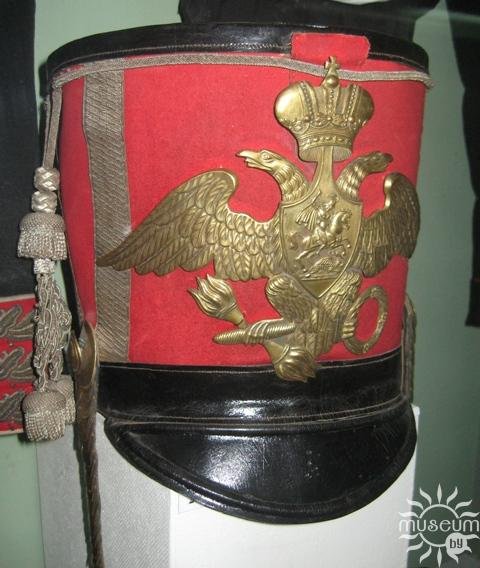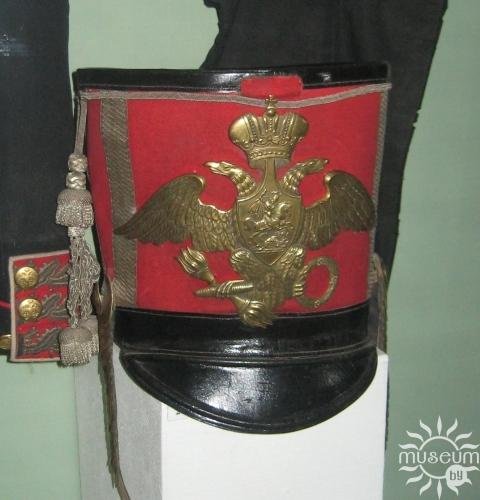Russian army of the 19th century was significantly different from the modern one. The military uniform was made according to the fashion of those times and was very expensive, so the soldiers took care of it. One of the part of the soldier’s uniform was a shako — a military headdress that was widely spread in the early 19th century. They were worn as officers of the officers, and lower ranks. The exposition of the Museum of Local Lore contains an officer's shako of the Life Guards Hussars of the 1st half of the 19th century.
The headdress is a truncated cone extending to the top in red, 25.5 cm in height. The top surface of the shako is covered with black leather. The lower edge of the headgear is trimmed with a leather belt so that the diameter of its lower part can be adjusted to the size of the head. Under the belt is sewn visor of thick leather with a slope down. Attached to the sides of the chin strap with the so-called "scales", consisting of individual figured plates.
By 1812 there was a fairly clear regulation of the emblems that were worn on shakos. On the front of the shako sign is a double-headed eagle with a torch in the right paw and with a laurel wreath in the left. On the chest of the eagle - shield with the image of St.. George the Victorious. On the sides of the headdress, an ettishket was fastened - an ornament consisting of two woven braids covering the shako in front and behind. Next to the etiquette on a short double cord are tassels.
Interestingly, a shako for a soldier was not only a hat. It is often kept money, spoon, comb, brush for a mustache, fabra, wax lipstick, thread and needles. Sometimes there it was possible to find a pipe with tobacco, a spare flint for a pistol, an awl, a screwdriver. Masterful soldiers wore in sharks and every small tool of their craft, since in the dolman there was nowhere to hold all this very necessary detail in the soldier's life.
The officer shako was transferred to the Museum of Local Lore of the Volkovysk military history museum named after PI Bagration.


